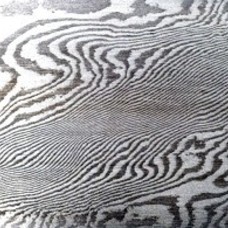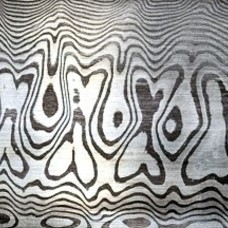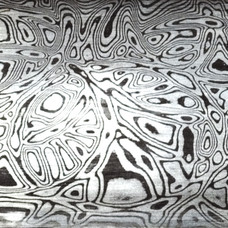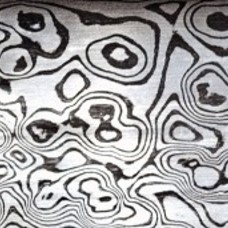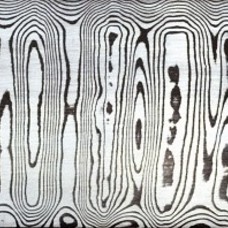Tradition Carbon Steel Damascus
Hoogwaardig carbondamast uit eigen smederij, gemaakt van bekende messen staal soorten. Vraag naar de mogelijkheden!
Wellicht wil je het staal ook etsen, voor een mooie patina, om de Hamon (hardingslijn) meer contrast te geven, óf om je Damastpatroon zichtbaar te maken? Hier vind je tips
Onderstaand informatie over ons carbondamast in de Engelse taal, aan de vertaling wordt gewerkt.
About our Carbon Steel Damascus
- What is it made of?
- In what state/condition is the steel
- Is it possible to buy this ‘Precision ground’?
- What sizes are available?
- Does it need to be tension annealed before hardening?
- What is the hardening procedure?
- What is the maximum achievable hardness?
- What can I etch it with to make the patterns visible?
- What is it made of?
Here we show you our handmade Carbon Steel Damascus. The steels combined to make this product, are well known, work very well together in factors of long edge retention and providing great contrast after etching.
The used steels are C100 and 15N20.
- In what state/condition is the steel?
It is soft annealed (app. 24 HRC) in a very exact heat treatment procedure. Therefore it is very easily workable (sawing, drilling, grinding).
- Is it possible to buy this ‘Precision ground’?
Yes, standard its ground clean with a little plus size. We also sell black (not-ground) stock on request for blade smiths.
- What sizes are available?
There is always a small stock available for this material, otherwise we are working from order. Sold sizes are 30x3 mm, 40x2.5, 40x3 and 40x4 mm.
For special requests please call on office hours CET on +31 (0)72202901, or send us an e-mail at [email protected] .
- Does it need to be tension annealed before hardening?
When the right grinding methods are used (do not overheat), this is not necessary. When the work piece has endured any impact, or in any other way increased internal tension by heavy machining, we do recommend it. We can arrange this service for you.
- What is the heat treatment procedure?
This carbon steel Damascus has a very plain heat treatment procedure.
When you are working with an external heat treating company, please make sure the hardening protocol is followed.
The absence of oxygen will prevent carbon loss.
Hardening: Heat on 830 - 850 ° (1526 – 1562 F) (preferably in protective environment (vacuum) and cool in oil.
Tempering: Heat between 180°C (356F) and 250°C (482F) for two hours in protective environment (vacuum) and then cool in air.
180°C (356F) = 61/62 HRC (670/688 HB)
Maximum hardness before tempering is 66 HRC (736+ HB)
Soft annealing: 720°C for one hour, cooling slow in oven. Protective environment (vacuum) is optional, but preferable.
- What is the maximum achievable hardness?
When optimally hardened, the end result is 61 HRC (670 HB)
- What can I etch it with to make the patterns visible?
To enhance the visibility of the patterns the most commonly used method is etching. Beautiful contrasts are achieved using sulphuric acid (H2SO4). Please be very careful when using acids! Very well polishing, thoroughly degreasing and slow etching for the best results. Neutralize the acids with sodium carbonate (Na2CO3) dissolved in water.
Another medium for etching Tradition Carbon Damascus could be etching in very strong and hot instant coffee. It works well, and it’s friendly to work with! Just rinse of the coffee when ready.
Always dry off well, and apply a thin film of oil after working.
Please enjoy our steel! May there be anything, don’t hesitate to contact us for advice, inquiry or comments.
Thank you for your interest.
Best Regards on behalf of the team,
Ms. Renske Schuyt – van Wijngaarden
Smederij Atelier Alkmaar


